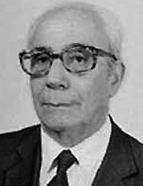

His frequent visits to the international book market and his in-depth knowledge of the techniques of the early days of movable type printing in the West, combined with his study of the expansion and evolution of this art in various European regions, led to the identification of unknown or falsely attributed Portuguese works, which Pina Martins rescued for the national bibliographic heritage. This was the case with the oldest printed book in Portuguese, the Tratado de Confissom, published in Chaves in August 1489, whose existence the scholar announced in a feature article in the Diário de Notícias in 1965, which he published in 1973, and whose purchase by the National Library of Portugal in 1982, which he promoted and mediated. This was also the case with the pamphlet Modus curandi cum balsamo ( c. 1530), a medical text printed in Portugal in the 15th century, of which only one copy is known, identified by Pina Martins from an analysis of the woodcuts used on the frontispiece. This work, which is believed to have come from the Lisbon workshop of Germão Galharde, was also acquired by the National Library through his intermediary in 1985. Pina Martins is also credited with the discovery of the only copy of an edition of Poesias de Garcilaso de la Vega published in Lisbon in 1587 by Manuel de Lyra, which the bibliophile acquired in 2004 for his ‘Biblioteca de Estudos Humanísticos’ (Library of Humanistic Studies), and whose existence he reported both in the scholarly circles he frequented and in the press.
To understand the importance of Pina Martins’ intellectual legacy, it is essential to bear in mind the historical context in which his work saw the light of day. At a time when direct access to old books in Portuguese libraries and archives was extremely difficult, when freedom of movement between countries was restricted by political and institutional barriers, and when the idea of nationhood was a fundamental principle in the conceptual architecture of historical and literary studies, not only the integrated and dynamic view of the European space that his works on iconography and book history presuppose, but also the research methodology based on the direct physical examination of the works studied, were exceptional. It can be said that, in the 1950s, 1960s and 1970s, investment in a scientific, comprehensive and transnational approach to the literary phenomenon, supported by direct examination of primary sources, represented a break with established practices and habits in the field of literary studies. This attention to sources seems to explain Pina Martins’ efforts to promote the dissemination of fundamental texts in facsimile editions, preceded by critical studies aimed at showing readers their cultural and bibliographical relevance , examples of which are the publications of short works by authors such as Boccaccio, Pico della Mirandola, D. Francisco Manuel de Melo, etc., which Pina Martins produced in the 1960s in conjunction with the bookshop ‘O Mundo do Livro’, and those he promoted while head of the publications department of the Calouste Gulbenkian Foundation in Paris and Lisbon.
This work is financed by national funds through FCT - Foundation for Science and Technology, I.P, in the scope of the projects UIDB/04311/2020 and UIDP/04311/2020.
